Parag Kachalia, D.D.S., shares a case study on the success of utilizing both single-use and multi-use burs during a procedure.
All photographs in this article were taken by Dr. Parag Kachalia.
A successful treatment involves the combination of proper diagnosis combined with appropriate clinical care protocols. At the same time, we must take into consideration that a successful practice is dependent on predictability of care and appropriate efficiency. This case study will examine the importance of rotary instrumentation and selection for each stage of a patient’s journey for preparation of indirect restoration through delivery. Particularly, the case will demonstrate how a hybrid approach of single-patient use burs and multi-patient use burs can be optimized for success on both the clinical and practice management fronts.

A 45-year-old male recently presented with discomfort on the left-hand side when biting. Upon clinical examination and testing, it was determined that the patient was exhibiting signs of cracked tooth syndrome on #19 (36) when the lingual cusps were loaded. After discussing the findings with the patient, a decision was made to remove the existing restoration, along with the fracture, and place an indirect cuspal coverage restoration, as well as to place a bonded e.max (Ivoclar Vivadent) restoration.
In order to treat this case appropriately, a total of five different multi-patient use burs and two single-patient use burs were utilized. The decision of one type versus the other is multi-factorial; however, the most crucial reason is the percentage of time the bur is going to be used on the preparation. Another important aspect is the precision of detail that needs to be involved.
The most precise preparation occurs when the bur is in its most pristine state. This can be either a brand-new multi-use bur or a single-use bur. The beauty of the latest advancements in single-use technology is how well these instruments cut, and a high magnification comparison shows the quality of the diamond coating between single and multi-use burs.
Figure 1 shows the coarse 5856SU.FG.018 single-use bur and Figure 2 shows a regular grit multi-use bur.
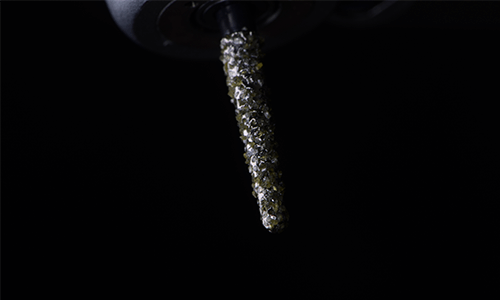
Figure 1 5856SU.FG.018 Single-Use bur

Figure 2
When one looks at Figures 3 (8856SU.FG.018) and 4 (8856.FG.018), a direct comparison of the exact same grit can be seen of two equally new burs.
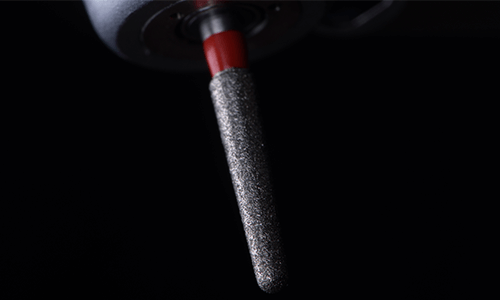
Figure 3 8856SU.FG.018 single use bur

Figure 4 8856.FG.018 multi-use bur
The question one needs to ask is, what happens to the multi-use bur after the 5th-10th use, especially after being sterilized numerous times? Furthermore, the breakdown of the bur over time can cause more heat generation on the dentition as well as lead to a detrimental impact on the handpiece.
Figure 5 depicts the initial presentation of the patient with distal marginal ridge and lingual fractures present, as well as marginal leakage around the existing composite restoration.
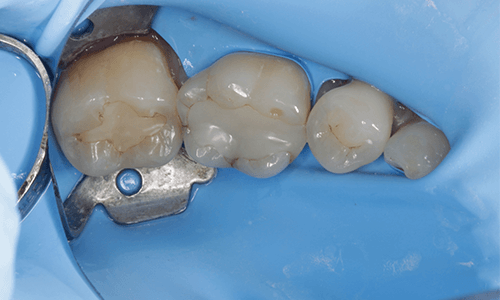
Figure 5
Knowing that this tooth would receive a full cuspal coverage restoration, a 1.0 mm depth cut was made across various aspects of the occlusal table. By implementing these depth cuts on the front end of the preparation, the operator can be confident that appropriate removal of tooth/restorative material has occurred to provide proper thickness for the final ceramic restoration.
To accomplish these depth cuts, a multi-use DM10.FG.009 bur was utilized (Figure 6).

Figure 6
After creating the depth cuts, the existing restorative material was removed (Figure 7) by utilizing a multi-use 838.FG.012 bur (Figure 8), and the caries was removed with a CeraBur, K1SM.RA.016 (Figure 9). The CeraBur in Figure 9 is used to remove caries for its enhanced tactile sensation on sound versus carious tissue. In addition, it tends to last substantially longer than traditional carbide round burs.
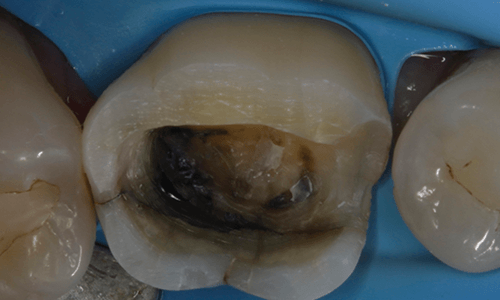
Figure 7

Figure 8
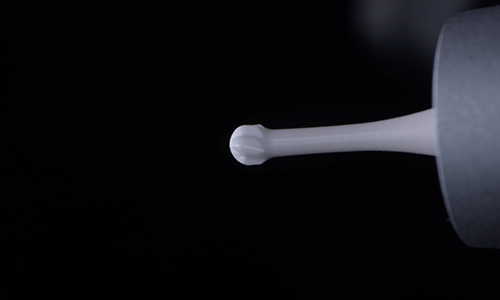
Figure 9
The occlusal table was then blended using a unique bur called the Occlushaper. The belly of an Occlushaper bur (Figure 10) is convex, and the periphery is concave. This design allows for a proper rounded architecture that decreases stress on the final ceramic restoration.

Figure 10
The periphery of the preparation and refinement of the margins were completed in three steps (Figure 11).
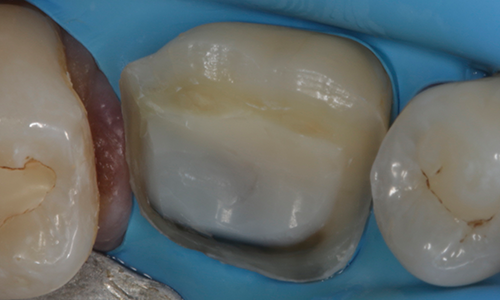
Figure 11
The first step utilized the coarse, single-patient use rounded shoulder bur depicted in Figure 1. A single-patient use bur was used in this step for efficiency. A significant amount of tooth structure is prepared in this step, and a fresh, single-use bur allows this to occur with ease.
This was followed by a multi-use fine pin diamond 8856P.FG.021 to allow uniform marginal contour (Figure 12).
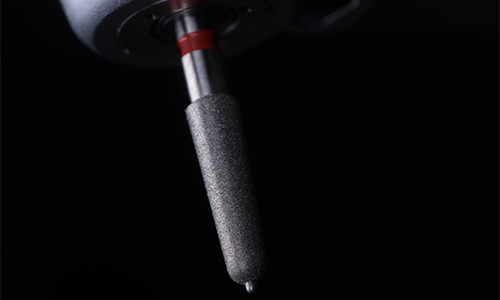
Figure 12
Relatively small amounts of tooth structure are refined with this bur, and it can be used for many preparations. An Occlushaper was reintroduced (Figure 10) to the occlusal surface to blend the foundational composite buildup. Finally, a single-use 5856SU.FG.016 bur (Figure 3) was taken over all aspects of the preparation to achieve a final refined state prior to digital impressioning.
On the day of delivery, the tooth was isolated, and the EMS Air-flow air particle abrasion system was used to clean off the bio film and any remnants of provisional cement. The restoration was then tried in, and it was apparent that the internal marginal fit was near ideal as a result of the highly refined preparation.
Minor proximal contact adjustments were needed, and these adjustments were completed with a diamond impregnated polishing system. A two-step diamond impregnated system (Figure 13 and Figure 14) was used as they have shown to be more effective versus silica carbide impregnated systems in terms of reducing surface roughness.
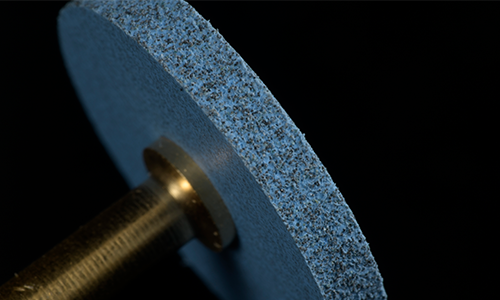
Figure 13
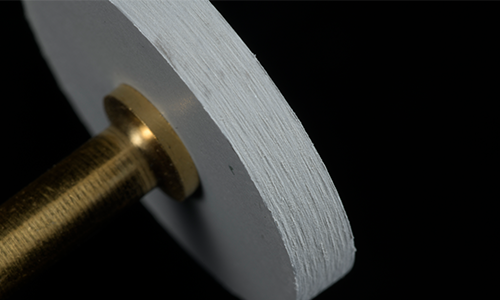
Figure 14
Once necessary adjustments were made and the restoration was polished, proper e.max bonding protocols were followed and the restoration was delivered utilizing Ivoclar’s Variolink Esthetic light cure cement. All margins were coated with a glycerine gel prior to final polymerization.
As a final step, all margins that were accessible underwent a final polish with a intraoral version of the polishers depicted in Figures 13 and 14. The final restoration immediately upon rubber dam removal is shown in Figure 15.

Figure 15
Repetitive success does not happen by accident, rather it is aided by having proper systems in place and leveraging armamentarium to your benefit. In this case, a combination of multi-use and single-use burs were utilized to obtain an appropriate clinical result. The world we live in today has many choices, and its incumbent upon us to find the mix of solutions that work best for our practice and patients.
